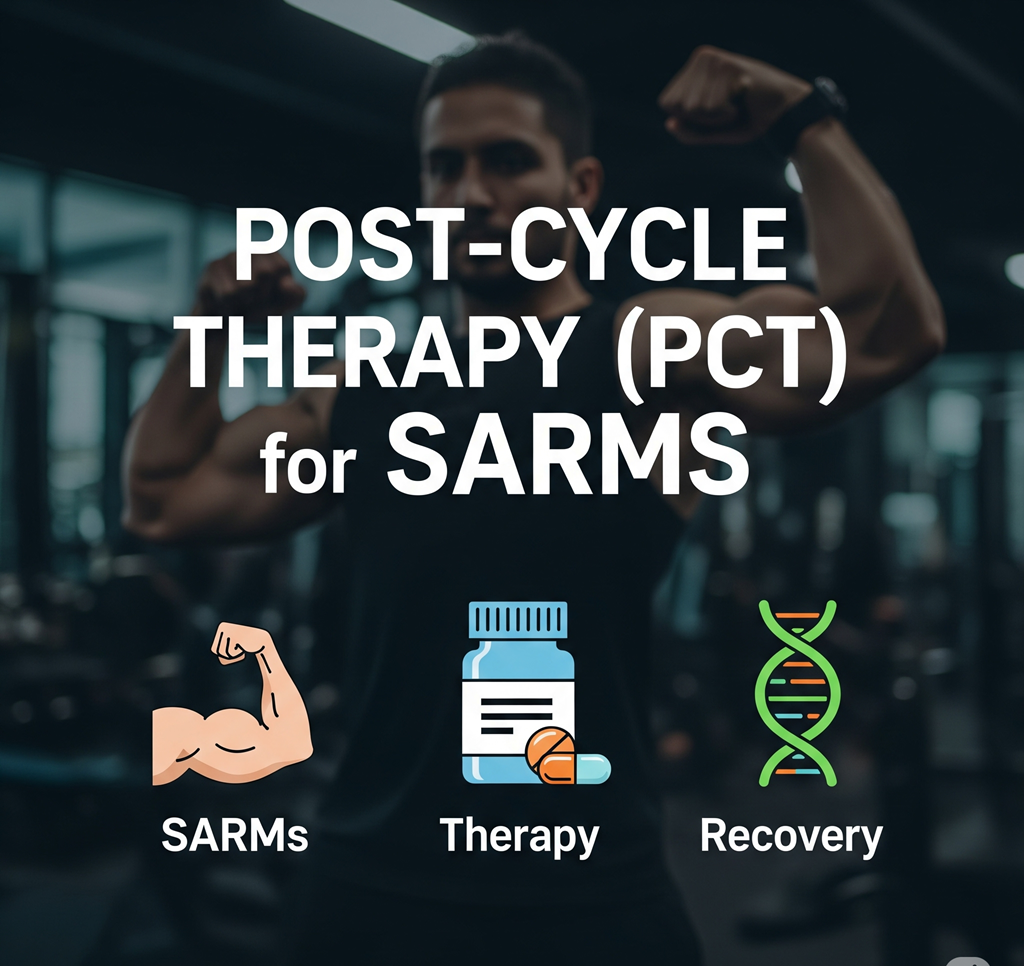A common and dangerous misconception circulating in fitness communities is that because SARMs are not steroids, they don’t require a Post-Cycle Therapy (PCT). After our last article established that popular SARMs like Ostarine and Ligandrol are indeed suppressive to natural testosterone production, we must now address how to manage that suppression.
So, is a PCT necessary after a SARM cycle? The short answer is: almost always, yes. This article will explain why.
Understanding Suppression from SARMs
To understand the need for PCT, you must first understand suppression. When your body detects a powerful androgenic compound (be it a steroid or a SARM), it signals your brain to stop producing Luteinizing Hormone (LH) and Follicle-Stimulating Hormone (FSH). These are the key hormones that tell your testes to produce testosterone.
When you end your SARM cycle, you stop supplying the external compound, but your body’s natural production is still offline. This creates a hormonal gap, leading to low testosterone symptoms like fatigue, low libido, muscle loss, and depression.
The degree of this suppression depends on three main factors:
- The Compound: More potent SARMs like Ligandrol (LGD-4033) and RAD-140 are far more suppressive than milder ones like Ostarine (MK-2866).
- The Dosage: Higher doses will cause a greater shutdown of your natural hormone production.
- The Cycle Length: The longer you are on-cycle, the more suppressed your system will become.
When is PCT Considered Essential? anavar for sale
While the decision is always personal, the user community generally agrees on the following principles:
- Mild Cycles: For a very short (e.g., 6 weeks) and low-dose cycle of a mild SARM like Ostarine, some may be able to recover naturally without a formal PCT. However, this recovery could be slow, and the user might experience low-testosterone symptoms for several weeks.
- Moderate to Potent Cycles: For any cycle involving powerful SARMs like LGD-4033, or for any cycle that is long in duration or high in dosage, a PCT is considered essential. Attempting to recover naturally from such a cycle would likely result in a prolonged period of hormonal crash and a significant loss of the gains made on-cycle.
The only way to know for certain if your hormones have returned to baseline is through blood work. A post-cycle blood test is the gold standard for confirming a successful recovery.
What Does a SARM PCT Consist Of?
Because the goal of a SARM PCT is the same as a steroid PCT—to restart natural testosterone production—the tools used are the same. The protocol typically involves using a class of drugs called SERMs (Selective Estrogen Receptor Modulators).
The most common SERMs used are:
- Tamoxifen (Nolvadex)
- Clomiphene (Clomid)
These compounds work by stimulating the pituitary gland to release more LH and FSH, which in turn kickstarts the testes back into producing testosterone. A typical PCT protocol after a SARM cycle usually lasts between 2 to 4 weeks, often with doses that are lower than what would be used after a heavy steroid cycle.
Conclusion: Don’t Neglect Your Recovery
The idea that SARMs are a “side-effect-free” ride is a myth. Their suppressive nature is a significant physiological impact that requires careful management. Neglecting PCT, especially after a potent cycle, is a recipe for losing gains and enduring a difficult period of hormonal imbalance. A well-planned PCT is a crucial insurance policy for your health and the results you worked for.
Disclaimer: This article is for informational purposes only. SARMs are research chemicals not approved for human consumption. SERMs like Nolvadex and Clomid are prescription drugs. All matters concerning your health and a proper recovery plan should be discussed with a qualified medical professional.








